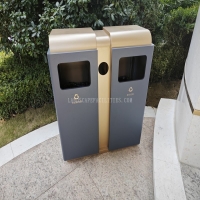Welcome to the website for landscape facilities products and knowledge.
How does the table’s design ensure compatibility with different types of therapy modalities?
The foundation of any effective therapeutic practice lies not just in technique, but in the equipment that supports it. A therapy table is far more than a simple platform; it is a dynamic piece of medical and wellness furniture engineered for maximum compatibility across a wide spectrum of treatment modalities. Its design ensures this universal applicability through several key, integrated features.
First and foremost is adjustability. A high-quality therapy table offers precise hydraulic or electric height adjustment. This is crucial for compatibility. A physical therapist performing deep tissue work requires a lower height for proper body mechanics and leverage, while an acupuncturist or energy worker needs a higher position for comfortable, precise needle insertion or hand movements without straining their back. This simple feature makes the table instantly suitable for practitioners with different physical needs and techniques.
The surface and padding system further demonstrate this designed compatibility. For modalities like massage therapy or chiropractic adjustments, a firm, dense foam is essential to provide a stable base and prevent bottoming out during intense pressure. Conversely, for craniosacral therapy or certain types of bodywork where a client may lie still for extended periods, a softer, plusher top layer is integrated to enhance comfort without sacrificing support. Many tables feature multi-layered padding or customizable tops to bridge this gap, serving both hard and soft technique modalities effectively.
The configuration of the table components is equally strategic. Adjustable face cradles, removable armrests, and articulating sections (such as backrests that elevate or leg sections that bend) are not mere accessories but core compatibility elements. A therapist performing prenatal massage will utilize the adjustable backrest and specialized bolsters. A chiropractor relies on drop-down sections for specific adjustments. An esthetician can remove armrests for easier access during treatments. This modularity allows a single table to be reconfigured for the unique postural and access demands of each discipline.
Finally, the overall structure and materials are chosen for universal utility. A durable, easy-to-clean, waterproof vinyl upholstery is non-negotiable for hygiene across all modalities, from messy spa treatments to clinical physical therapy. The table's base is designed to be narrow, allowing practitioners to sit or stand close without obstruction, a universal need for any hands-on therapy. The weight capacity and structural integrity are engineered to safely accommodate all clients and the various positioning required by different practices.
In conclusion, a therapy table's design ensures compatibility not through a single feature, but through a synergistic combination of adjustability, customizable comfort, modular components, and robust, hygienic construction. This thoughtful engineering transforms it from a passive piece of furniture into an active, adaptable partner in delivering effective care, regardless of the therapeutic modality being practiced. It is the ultimate chameleon in the clinical or wellness space, seamlessly shaping itself to fit the practitioner's art and science.
Related search:

Recommendation
Double-bucket garbage bin, outdoor, metal, multi-color, powder-coated, double-bucket trash can